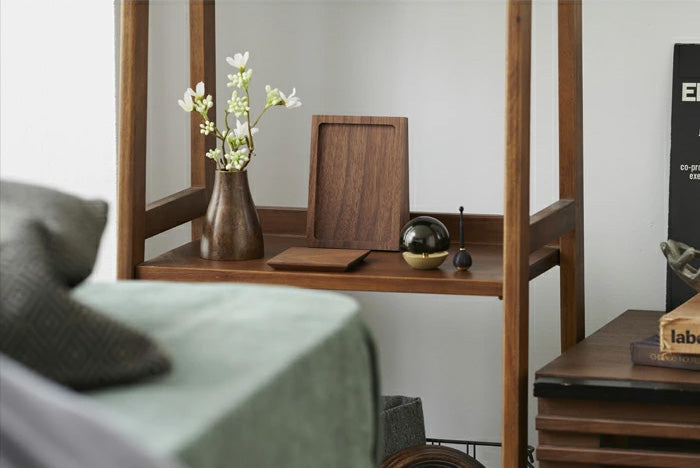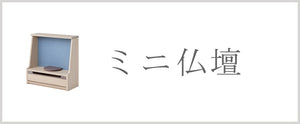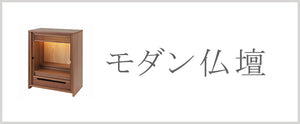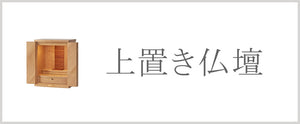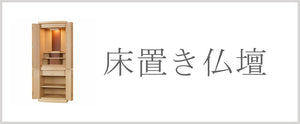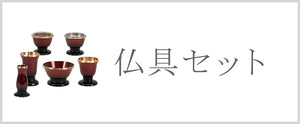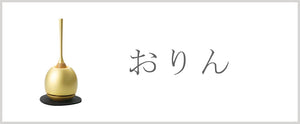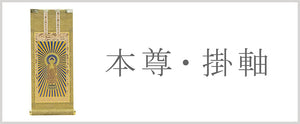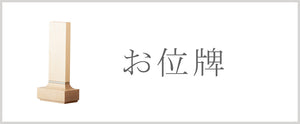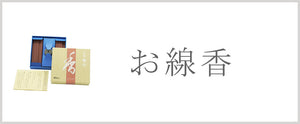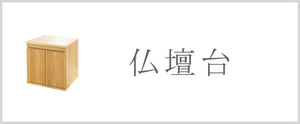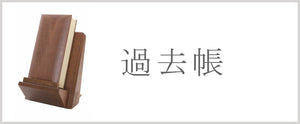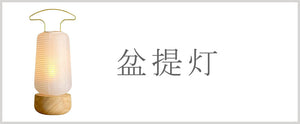Last updated:
Release date:
Have you ever had the experience of gently placing your hands together in front of a photograph in the Buddhist altar and praying for the repose of the soul of the deceased?
Just like the memorial portraits displayed at funerals, photographs of the deceased in the Buddhist altar provide an opportunity to reflect on how the deceased lived and what kind of person they were to us.
However, traditional Buddhist altars do not have a place to display photographs of the deceased. This is because there is a rule that "photos should not be placed on Buddhist altars."
Why don't you put a photo on the altar?

In Buddhism, the Buddhist altar is considered a "small temple in the home."
It is considered inappropriate to have a photograph of the deceased in such a place, as it would obscure the object of worship. In particular, in the Jodo Shinshu sect, ancestors are in paradise, so it is not appropriate to worship their photographs in the secular world.
On the other hand, even before Buddhism was introduced to Japan, every home had an altar for ancestral memorial services, where people offered daily prayers of gratitude to their ancestors.
It is clear that the act of praying to one's ancestors, just like praying to Buddha, has been cherished from ancient times to the present day.
Is it bad luck to put a photo in the Buddhist altar?
I explained that in Buddhism, there is no need to put photographs in the Buddhist altar in the first place.
So, is there a belief that if you put a photograph in the Buddhist altar, something bad will happen or that it will be considered bad manners towards the deceased?
In fact, we often hear concerns such as, "Unbeknownst to me, I have been displaying photographs on the Buddhist altar and offering prayers for the deceased. Will something bad happen?" or, "I know that photographs are not allowed, but I would like to offer prayers while looking at the face of the deceased. But I am worried that it might be disrespectful to the deceased or that something bad might happen."
In Buddhism, things are not judged by good or bad fortune, so there is no need to worry that something bad will happen just because you have displayed a photo.
However, each temple has different opinions, so if you are concerned, we recommend that you consult with the temple you have a relationship with.
Things to keep in mind when displaying photos on your Buddhist altar
Based on what we've discussed so far, are there any points you should be careful of if you are going to display photos in your Buddhist altar? Here we will explain "where to place the photos" and "what the photos should contain."
Where to put photos
Please be careful not to hide the principal image from the memorial tablet. Also, please keep it away from Buddhist altar implements that use fire, such as incense burners and candle holders.
Photo content
Choose a photo that "looks like the deceased." Generally, people tend to avoid photos that include living people.
If you keep the memorial at home, you can display the photos more freely.

In recent years, due to changes in religious views, the number of people who do not belong to a specific sect and are "non-denominational" has been increasing. In response to this trend, new methods of memorial services have also emerged.
Typical examples are methods such as "home memorial services" and "personal memorial services," which have no Buddhist rules.
In this case, there is no need to prepare a principal image, so you can place a photograph or memorial tablet in the center.
There are no hard and fast rules for displaying photos.
For example, photos from a family trip, photos taken on anniversaries, or other snapshots of the days you spent together. We also recommend things you would like the deceased to see after they have passed away, such as flowers blooming in the garden or vegetables from the field.
Nowadays, you can easily print images taken with your smartphone at convenience stores and electronics stores, so you can change out your favorite photos depending on the season or the occasion.
Here is an article that goes into more detail about hand-feeding.
What to include with the photo

Temotokuyo is a personal memorial service method that is not bound by religious or sect rules, so you can decorate your Buddhist altar according to your own wishes.
For example, it would be a good idea to display perfumes or colognes that the deceased loved along with photos.
Photographs allow you to visually feel the presence of the deceased, and adding scent to that may provide a sense of security, as if the deceased is watching over you.
The way you think about the photos in your Buddhist altar will change depending on whether they are a "Buddhist memorial" or a "personal memorial."
From a Buddhist perspective, there is no need to display photos of the deceased on the altar. However, even after learning this, many people still say , "I still want to display photos." Please rest assured that this is not bad manners or bad luck.
Choose the method that best suits your mood.
Recently, a new method of memorial service that is not bound by religious rules, known as "home memorial service" or "personal memorial service," has become common.
If you want to freely create a prayer space, why not consider this as one of your options?
Nagomi Kobo TOP page is here >
